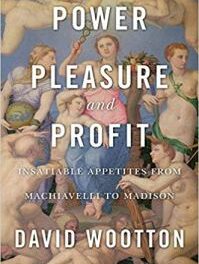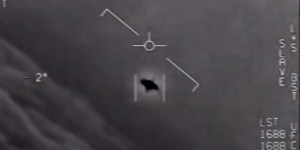We support our Publishers and Content Creators. You can view this story on their website by CLICKING HERE.
We now live in a world, as I suppose we always have, that needs to relearn what happened in Oklahoma City 29 years ago. We need to know and feel what radical violence looks like, what it means to snuff out human life for no reason… how it crushes the survivors, and disfigures the communities in which it occurs. Oklahoma City could happen again.
My wife and I were recently in Oklahoma City to celebrate the happy occasion of our son’s marriage. However, while there we took the opportunity to visit the near-by Oklahoma City National Memorial & Museum, memorializing the Oklahoma City bombing that occurred on April 19, 1995, at 9:02am.
The Memorial is extremely moving, a simple green space with a shallow reflecting pool, incorporating what’s left of the foundation of the Alfred P. Murrah Federal Building, which was blown away that morning by two murderers in what remains the worst act of domestic terrorism in American history. On the lawn next to the reflecting pool stands a field of 168 empty chairs, in nine rows representing the floors of the building, and placed to represent the blast pattern of the explosion, as floors cascaded down upon one another. Each chair is engraved with the name of one of the people known to have been murdered in the explosion and its immediate aftermath. The inscriptions are arranged to show where in the building the victims’ bodies were found. Some of the chairs are smaller, each of them representing one of the 19 children killed in the on-site day care center housed on the second floor of the building. Three unborn children killed are listed on their mothers’ chairs under their murdered mothers’ names.
One can only imagine what it was like to pull the mangled bodies and other bits of now irrelevant debris from floors of the former building that pancaked after the blast. How did it feel to sift through such carnage in the hope of finding survivors?
According to the official Final Report, there were 675 survivors of the blast who sustained non-fatal injuries, mostly in the Murrah Building, but also in a number of surrounding buildings that sustained significant damage. Eighty-three of these survivors were hospitalized, and most of those sustained permanent disabilities. All of the survivors were obviously deeply affected. Their lives were traumatized and shattered in myriad ways by this unfathomable act of violence. Their pain seems to hover, unresolved and invisible, over the memorial site as well, and one struggles to comprehend the depth of their suffering in order to honor it too. Each survivor has had to come to terms with trauma in his or her own unique and private war of recovery. Such suffering, though completely unnecessary and undeserved, has become for each of them one of the hard truths of existence.
Going through the unvarnished and thought-provoking exhibits at the Museum next door, one is forced to confront a terrible mystery: how could the perpetrators have become so drunk with anti-government ideology as to somehow justify to themselves the extreme violence they perpetrated on their victims? Why and how is the beautiful human mind so vulnerable to delusion that it can leverage such crazy and radical evil? And will the glass jaw of human frailty ever be overcome? Will the pain and sorrow it causes ever end?
The day we visited the Oklahoma City National Memorial was Oct. 7, the first anniversary of the Hamas massacre of approximately 1200 Israeli Jews, who were brutally mutilated and murdered by terrorists for being Jewish. Two hundred and fifty prisoners were taken as well, and approximately 100 of them, dead or alive, remain in captivity. As I went through the Museum, ever more numb, I could not help recalling that a local pro-Palestinian group in Bloomington, Indiana, our hometown, had scheduled a vigil for the evening of Oct. 7, to mark the occasion of this unspeakable horror. What was the purpose of their vigil? The only thing separating the senseless Hamas massacre from the holocaust that killed 6 million Jews is that Hamas lacked the means and opportunity to emulate their Nazi forebears. They perpetrated joyful slaughter, but lacked the mechanized death camps that enabled the Nazis to systematically replicate mass murder in numbers that beggar the imagination. Is this what the implicitly pro-Hamas vigil was intended to commemorate? Unspeakable violence? Genocide?
Virulent antisemitism is now openly expressed because it has gained respectability in polite, supposedly educated circles, including academia, the media, and such once-respectable institutions as the United Nations. The top has come off Pandora’s box, and once again the worst instincts of humanity are stalking victims. The claims that Israel is an apartheid state, that it is a “settlor-colonialist” state, most of all the surreal assertion that it is perpetrating genocide itself, would be laughable forms of intellectual quackery if they were not themselves a toxic ideology that dehumanizes its victims and normalizes radical violence. Oklahoma City has already been there.
We now live in a world, as I suppose we always have, that needs to relearn what happened in Oklahoma City 29 years ago. We need to know and feel what radical violence looks like, what it means to snuff out human life for no reason… how it crushes the survivors, and disfigures the communities in which it occurs. Oklahoma City could happen again.
I don’t know how visiting the Oklahoma City National Memorial & Museum would affect those who actively or passively condone the horror of the Hamas massacre of Israeli Jews on Oct. 7, 2023. For me, the visit was not only horrifying, but ultimately uplifting. The human spirit will not be destroyed even by extreme acts of violence that are beyond the ability of human intelligence to understand. In fact, acts of such radical depravity reveal, in the struggles of those left behind to cope, a strength and will to find hope that no Hamas terrorist will ever eradicate, that no confused academic will ever discredit, that no shabby, morally debased institutions can ever annul.
I am glad our son and his wife celebrated their marriage in Oklahoma City because the Memorial there gives me hope that he and his wife will inherit a world of goodness that can be tarnished, but cannot ever be destroyed. So say the empty chairs inscribed with the names of the dead.
The Imaginative Conservative applies the principle of appreciation to the discussion of culture and politics—we approach dialogue with magnanimity rather than with mere civility. Will you help us remain a refreshing oasis in the increasingly contentious arena of modern discourse? Please consider donating now.
The featured image is a panoramic picture of the Oklahoma City Memorial. This file is licensed under the Creative Commons Attribution-Share Alike 3.0 Unported license, courtesy of Wikimedia Commons.
Share This Story, Choose Your Platform!
Go to Top

 Conservative
Conservative  Search
Search Trending
Trending Current News
Current News 






